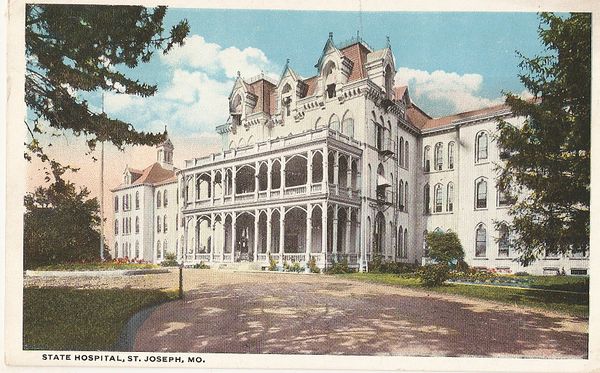Difference between revisions of "Portal:Featured Image Of The Week"
From Asylum Projects
M-Explorer (talk | contribs) |
M-Explorer (talk | contribs) |
||
| Line 1: | Line 1: | ||
{{FIformat | {{FIformat | ||
| − | |Image= | + | |Image= St. Joseph State Hospital PC.jpg |
|Width= 600px | |Width= 600px | ||
| − | |Body= [[ | + | |Body= The story begins in 1872 when [[St. Joseph State Hospital|Missouri’s State Legislature]] approved $200,000 for the building of a Lunatic Asylum and St. Joseph citizens convinced the legislature to locate it just east of their city. Opening its doors on November 9, 1874, the hospital was called the State Hospital for the Insane No.2, or more familiarly named the Lunatic Asylum #2. Beginning with 25 patients, the first hospital superintendent described the institution as "the noble work of reviving hope in the human heart and dispelling the portentous clouds that penetrate the intellects of minds diseased.” And so it was for the next 127 years. |
}} | }} | ||
Revision as of 03:12, 8 March 2020
Featured Image Of The Week
The story begins in 1872 when Missouri’s State Legislature approved $200,000 for the building of a Lunatic Asylum and St. Joseph citizens convinced the legislature to locate it just east of their city. Opening its doors on November 9, 1874, the hospital was called the State Hospital for the Insane No.2, or more familiarly named the Lunatic Asylum #2. Beginning with 25 patients, the first hospital superintendent described the institution as "the noble work of reviving hope in the human heart and dispelling the portentous clouds that penetrate the intellects of minds diseased.” And so it was for the next 127 years.
